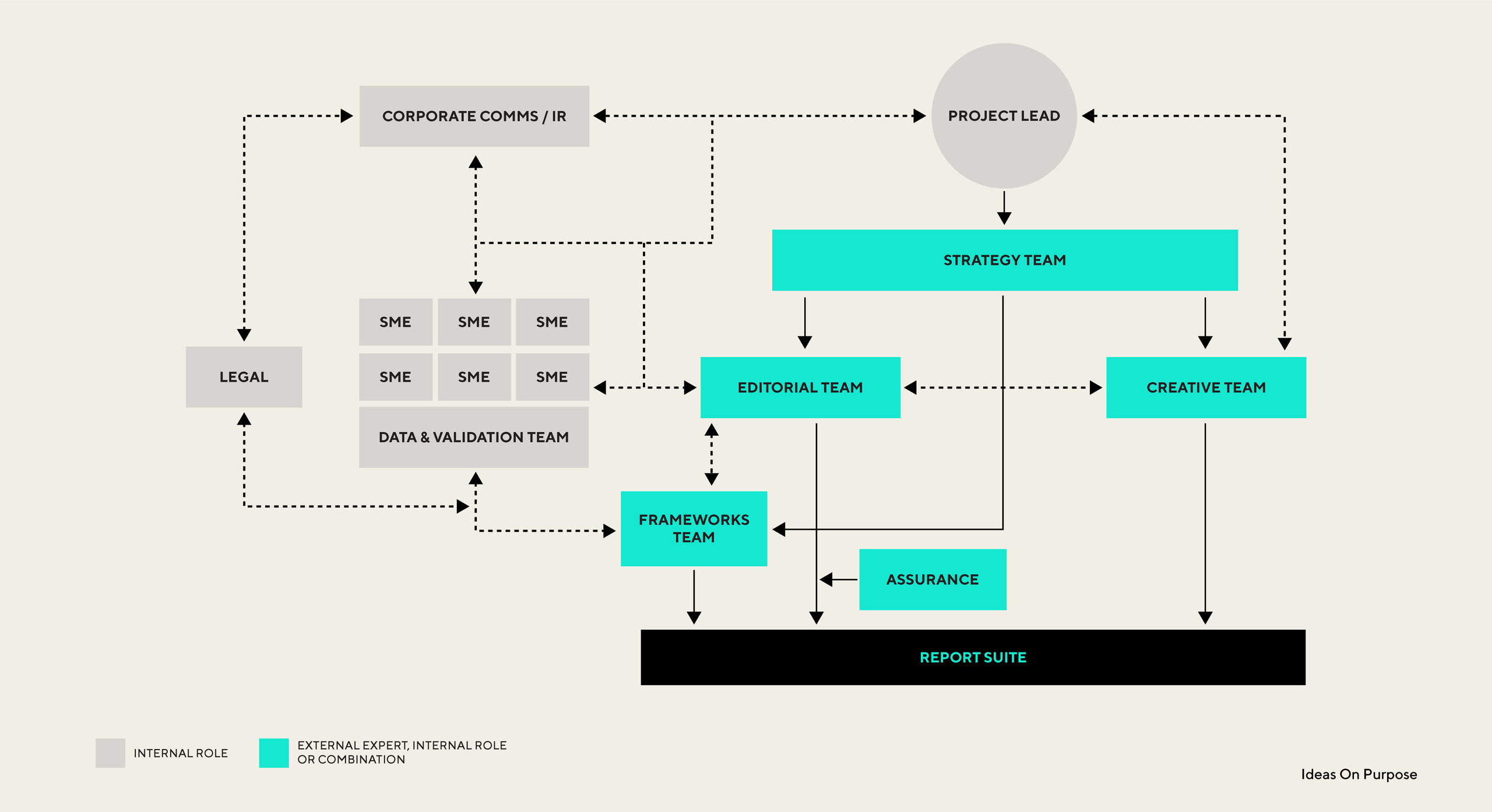Who’s on a Successful Reporting Team?
Producing a Sustainability, ESG or Impact Report is definitely a team effort. The exact size and shape of the team will depend on the size of the company, internal versus external resources, and the reporting ambition.
The teams and roles outlined below may each live with one or many people, but each team needs one accountable person, and every successful reporting project needs one designated leader. Some roles can only be filled from internal resources, others may be best suited to specialists. Some people may be on many teams.

Critical to Success
Project Lead: The single person on the company team who has oversight of the entire process. They get alignment from the executive team, and advise and guide all teams. They may lead strategy effort. The project lead is the team captain; they manage timelines and internal reviews. Most important, this person is accountable, and is the decision maker who ensure the work can get done.
Corporate Communications and/or Investor Relations: Sometimes the project lead, or works in partnership. Ensures alignment with corporate messaging and objectives, as well as guides the overall process. Often includes the executive sponsor, who ensures alignment with corporate strategy.
Strategy Team: Defines the reporting ambition and ensures that ESG is tied to business goals. Performs benchmarking, gap analysis, and the materiality assessment. May be involved in goal setting, as well. This team creates reporting strategy, leads stakeholder engagement, determines framework(s) to include, and defines the scope and boundaries of the report. Typically, deeply involved at the outset and may draft the top-level outline.
SMEs: Subject Matter Experts (SMEs) identify key themes, stories and strategies for their area of expertise, provide the source materials and help in the validation process.
Legal: An important stakeholder as more items are regulated and become litigious. Sometimes Legal owns the reporting, thought it is still a communications document rather than a legal document. However alignment with the 10-K, Proxy and other fillings make legal an important contributor.
Editorial Team: Gathers and synthesizes content from SMEs and create a cohesive narrative—the storytelling— translating the technical for wider audiences. Collaborates with the creative team and ensures alignment with reporting strategy. Owns the iterative review and edit process from early drafts through layout.
Creative Team: Brings the information to life, visualizes the data, incorporates imagery and hierarchy of information, and ensures the materials are in alignment with the brand and that all quality standards are met. Creates accessible formats for various audiences, including website updates, videos, PDFs, print materials, presentations, and more.
Data & Validation Team: Important internal role at the reporting company, checks and validates the information. Owns the data.
Frameworks Team: Assesses the report for alignment with selected frameworks, creates the indexes.
Assurance: Becoming a necessity, third party assurance is needed for much of the data and is recommended if not required.
Ideas On Purpose can help
This year stratege how you can work smarter on your reporting, not harder. For over 20 years, IOP has been helping companies of all sizes with sustainability strategy & reports, websites and communications. Email us to to discuss your next step.
Photo by Vlad Hilitanu on Unsplash
Updated June 2024